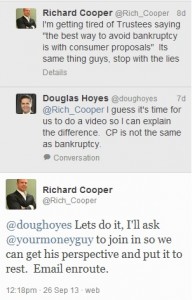
Borrowing money really is a double-edged sword. On the one hand, smart borrowing will help you build up a good credit score so that you can take out further necessary loans or credit, such as a mortgage. But at the same time, borrowing can affect your ability to obtain employment, a home, and insurance depending on how you manage your finances.
Today, it is almost impossible to get by without credit – many services require a credit card, and if you are to make a large purchase like a car or a house, you pretty much can’t get by without it. If you are responsible with credit, it can be highly useful. But if you aren’t careful, the results can be catastrophic.
To help you better understand and make smart decisions with your credit, we’ve created the Average Joe and Jane Guide to Smart Borrowing. Behold.
What is Credit?
Credit is, simply, the money you borrow to pay for purchases. It includes any loans, financing and credit card purchases. There is an agreement that you will pay back the money you have borrowed, plus a little bit extra.
The extra amount is the cost associated with borrowing the money, and generally comes in the form of fees and interest. Fees are what you are charged by financial institutions for services such as reviewing loan applications or servicing the account. Interest is the amount a creditor charges for letting you use its money. The amount of interest you will be charged on credit or obtaining credit approval depends on your borrower profile.
Tips for Managing Your Credit
Smart borrowing is predicated upon wise financial management practices. To build good credit rather than accumulate unmanageable debt, you should always strive to follow these guidelines:
- If possible, pay off your entire bill each month
- If you can’t service the entire amount each month, try and pay more than the minimum due. This will help reduce finance charges and lessen the total interest you pay on the money you have borrowed
- Pay bills on time in order to avoid late fees and protect your credit history
- Be sure to check your monthly statements to verify if the charges are correct.
Test your borrowing limits with our simple debt to income ratio calculator to see if you’ve borrowed more than you should.
Common Borrowing Mistakes to Avoid
Many of us are guilty of engaging in practices that could eventually lead to unmanageable debt and poor financial standing. It’s a good idea to be wary of – and try your best to avoid – the following:
- Using credit cards or other unsecured debt for everyday living expenses, which grows your unsecured debt over time
- Making only minimum payments toward your outstanding debt. Interest will accumulate over time, meaning you will owe a larger amount
- Falling behind on payments. You will incur a number of associated late fees
- Paying more than 40% of your monthly take-home pay in debt payments
- Having an unsecured debt-to-income ratio of more than 50% of your annual after tax income
- Using alternative financial services, such as Payday Loans. These tend to have extremely high interest rates if you do not repay the loan within a short-period of time. It may be wiser to consider a longer term loan from a bank or other financial institution
We take on debt based on the assumption that we will be able to pay it back. We incur debts for cars, mortgages on houses, and other consumer items. They key is to borrow only what you can afford to repay.
But sometimes, debt can become unmanageable, and there comes a point where we are not able to repay the money we’ve borrowed. To make ends meet we often turn to more credit as a solution and the debts accumulate over time, to the point where we have too much debt, much more than we can repay on our own. That’s where a bankruptcy or consumer proposal comes in. It provides a chance for the honest, but unfortunate debtor to find debt relief and get a fresh financial start.









